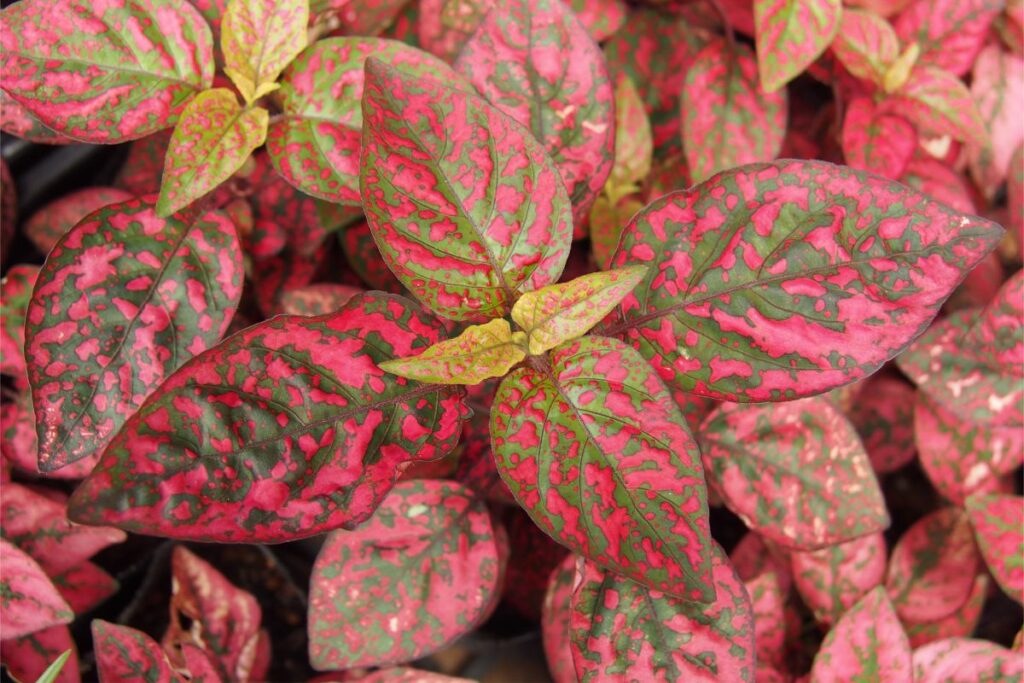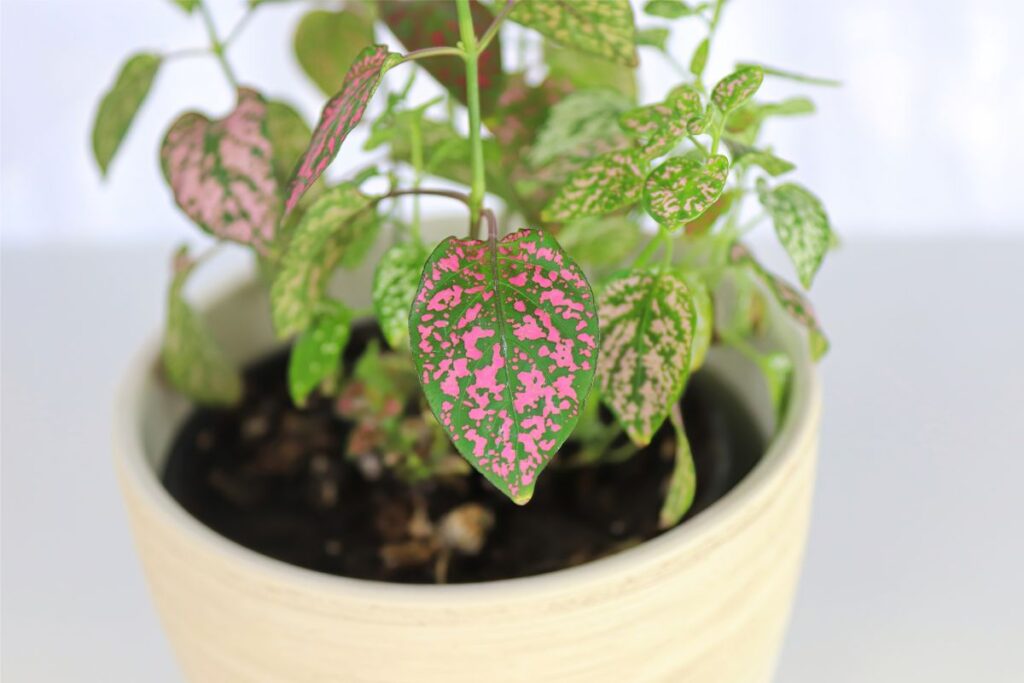Are you considering buying a polka dot plant for your home? Before you do, it’s important to know whether these plants can be toxic to dogs. In this article, we’ll also look at what parts of the polka dot plant are poisonous and what the symptoms of poisoning are. We’ll also discuss how to keep your pup safe and the difference between polka dot plants and polka dot begonias.

Contents
Are Polka Dot Plants Toxic To Dogs?
Polka Dot plants aren’t toxic to dogs, but they can still cause mild discomfort if ingested in large amounts. To make sure your pup is safe, you should try training them to stay away from the plant and provide alternatives that are dog-friendly. If signs of boredom appear in your canine buddy, it’s best to seek veterinary advice so you can find ways to enrich their environment with toys and activities. Training methods such as positive reinforcement can be used in order to help your pet learn which plants are off-limits. Additionally, providing plenty of dog-friendly alternatives will ensure that they have enough snacks available without having to resort to nibbling on the Polka Dot plant.
What Parts of the Polka Dot Plant Are Poisonous?
You don’t have to worry about any of its parts being poisonous, so your pup is safe around it. The polka dot plant is an ideal choice for pet-friendly plants—it’s a houseplant that doesn’t pose any safety risks to your dog. It’s also great for those looking for a low-maintenance way to do some dog-friendly gardening.
Not only does the polka dot plant not contain any toxic parts, but it’s easy to care for and can last quite a while in your home. In terms of toxicity levels, you won’t have anything to worry about with this particular plant when it comes to having pets in the house. Its lack of harmful components makes it a great option if you’re looking for something that won’t cause harm or distress to you or your four-legged family members. With no poisonous plants involved, the polka dot plant is a safe and attractive addition to any home environment where there are pets present.
Related Post:
Are Polka Dot Plants Toxic To Cats?
What Are the Symptoms of Poisoning?

If ingested, symptoms of poisoning can include nausea, vomiting, and diarrhea in both humans and pets. Other common symptoms may include:
- Rash or itching in the mouth or throat
- Swelling around the lips and tongue
- Abdominal pain
To prevent plant poisoning from occurring in the first place, it is important to keep all plants out of reach of children and pets. Pay attention to what your pet is doing around plants, as they are more likely to ingest something that could be poisonous. It is also a good idea to become familiar with common poisonous household plants so you know which ones should be avoided. If someone has eaten any part of a poisonous plant, treatment options will vary depending on the amount that was ingested and the stage it was at when it was consumed. Seeking medical attention as soon as possible is always recommended for everyone’s safety.
Keeping Your Dog Safe
Taking precautions to keep your dog safe is essential, especially when it comes to potentially dangerous items like household plants. Polka dot plants are a popular option, but due to their toxicity, pet owners must take extra care. Dog-proofing your home is one of the most important steps in protecting your pup from toxins and other dangers. Start by selecting pet-friendly options for your home such as ivy or peace lilies, both of which are considered non-toxic to dogs.
In addition to plant selection, pay close attention to your pet’s nutrition and behavior. Dogs that may be lacking in key nutrients can become more susceptible to seizures caused by ingesting toxic substances such as polka dot plants. Also, be aware of any changes in behavior that could indicate poisoning or an underlying health issue. Regular vet visits will help you stay current on any potential health concerns and provide early intervention if needed.
Lastly, toxin awareness is key when caring for a pet – know what plants may be toxic so you can avoid them completely, and never assume that just because a plant looks harmless it actually is! Educate yourself on how common houseplants may affect your dog’s safety so you can make an informed decision about what should (or shouldn’t) go in your home environment. By taking these simple steps you can ensure the safety of both yourself and your furry friend!
Polka Dot Plants vs. Polka Dot Begonias

When it comes to houseplants, it’s important to distinguish between Hypoestes phyllostachya and Begonia as one can be safe around pets while the other can be dangerous. Polka Dot Plants are non-toxic to dogs, making them a great choice for pet owners who want to add greenery without compromising their pet’s safety. Plant care tips for keeping your dog safe include:
- Wear gloves when caring for these plants, as the sap may irritate skin or cause an allergic reaction.
- Benefits of having polka dot plants include vibrant colors and patterns that look like dots or freckles.
- Non-toxic alternatives to polka dot begonias include common houseplants such as spider plants, aloe vera, and philodendrons which are all safe for dogs.
- How to prevent plant poisoning in dogs is simple – avoid any plants that contain soluble calcium oxalates which can lead to hypocalcemia or kidney failure.
